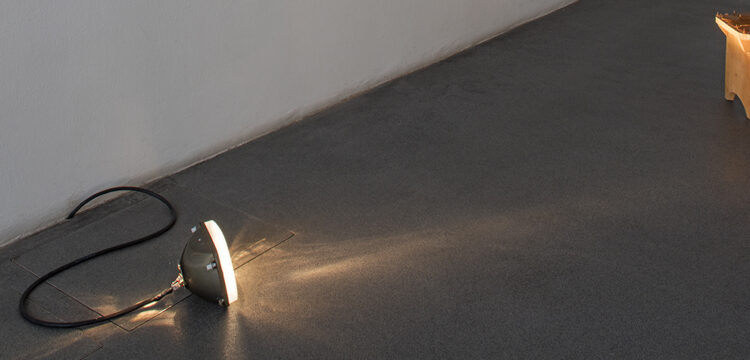Architecture of Speed
Paul Jaray and the shape of necessity
Architecture of Speed. Paul Jaray and the shape of Necessity is a project curated by Wolfgang Scheppe that will inaugurate at the Arsenale Institute for Politics of Representation on November 5th.
Six Key Points
1. This long-overdue exhibition comes as a key moment: the hundredth anniversary of the scientifically-engineered automotive body design, as marked by Paul Jaray’s 1921 patent application.
2. Over the last century, society’s stance on the widespread use of private transportation has flipped: it began as an attempt, on the part of progressive intellectuals, to provide some freedom of movement to the proletariat, which was then the majority of the population. Eager to express its modernity, the Nazi regime later appropriated this idea. Today, however, we can’t dissociate the private car from the damage it inflicts on the global community. The use of private vehicles, in all their shapes and forms, is perceived as environmentally reckless, and even reactionary.
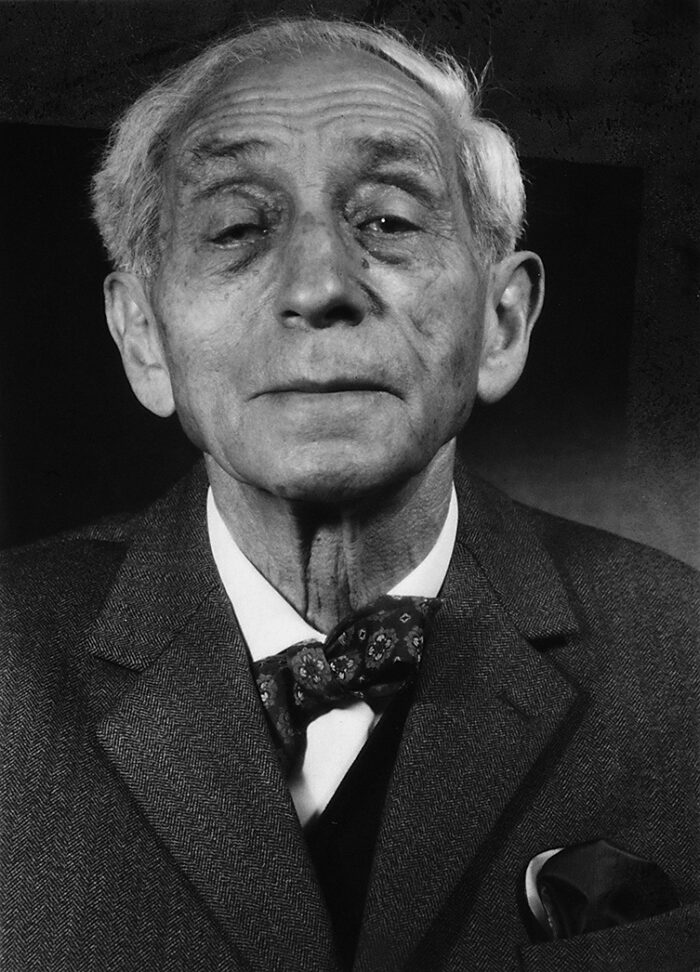
3. An explanation is needed for why Paul Jaray, despite his many fundamental technical innovations, died penniless and unknown in 1974. The reason lies in the erasure of his authorship during the Nazis’ persecution of Jews.
4. Conversely, an explanation is also needed for why the artistic avant garde, of all groups, remembered the forgotten Paul Jaray (for instance, in documenta 6) as an exemplary advocate of technological utopia
5. Architecture of Speed provides these explanations. Paul Jaray’s theoretical work is confronted with the sheer beauty of his body designs, which will be represented in models, images, and an impressive life-sized, record-breaking car. In February 1935, on the Firenze-Mare highway, this never-before-seen model was the first automobile to reach 300 km/hr on the open road.
6. Paul Jaray was not only the first to promote the mathematical optimization of the car’s aerodynamics for energy efficiency and sustainability (with the low resistance of his spindle-shaped body design), but, already at the end of the 1920’s, he considered alternative forms of energy indispensable in what he saw as the coming exhaustion of fossil fuels.
Paul Jaray’s axiom:
“Eliminate or Streamline”
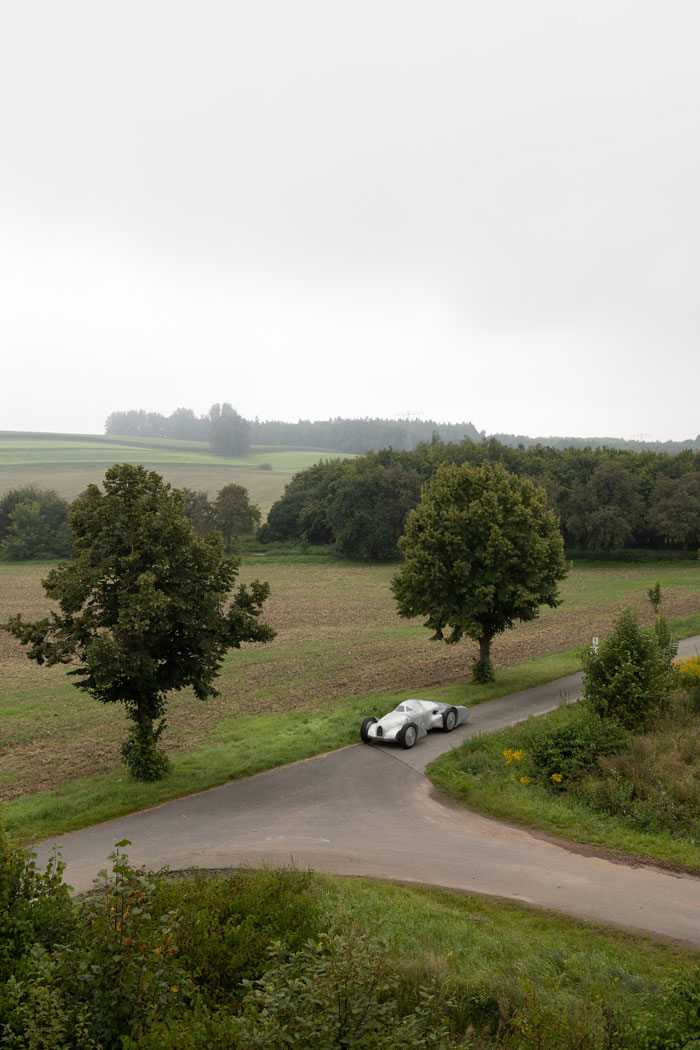
it was built, the Meisterschule für Karosserie- und Fahrzeugbau in Leisnig, Saxony. Photographer: Adrian Sauer, © 2021 Arsenale Institute, Venice.
Paul Jaray and the Shape of Necessity
1.
Paul Jaray (1889–1974), whose patent application is now a hundred years old, was the first and most important pioneer of aerodynamics for automobiles. Before anyone else did, he gave land-based vehicles a scientifically-based shape. Yet reflecting on Jaray’s role as an automotive pioneer today, when it has been established that the car and individual mobility have reached the end of their socially justifiable existence, means looking back to the diametrically opposed moment of the heroic automobile era. This machine stood for a leftist social utopia: the masses were to be liberated through an imagined revolutionary redemption by means of technical progress in motorization. These beginnings have faded from memory.
Through a distorted but highly effective act of expropriation, German fascist propaganda exploited an image of the future that had actually been developed by Jewish intellectuals from Vienna following the turn of the last century. In addition to Jaray, Edmund Rumpler (1872–1940) and, above all, Josef Ganz (1898–1967) and his thoroughly progressive periodical Motor-Kritik should be mentioned in this context. Their progressive spirit, which linked social advances with the technological efficiency of industrial productivity, has today been transformed into its opposite: the sport utility vehicle or SUV, which is popular with the masses, weighs several tons, and is harmful to the environment. Furthermore, it no longer truly serves—metaphorically or physically—the act of moving ahead. Instead, its primary function as a prestige object signifies a reactionary clinging to an unsustainable, anachronistic need to show off. The private machine as an instrument of emancipation is today nothing more than evidence of anti-enlightenment adherence to an object that is detrimental to the greater good. Jaray, with his optimistic technological fervor—which, in the spirit of the Futurist Marinetti, led him to make the programmatic proclamation “Eliminate or streamline!”—anticipated this much earlier than his peers. He was not only the first to propagate the mathematical optimization of fluid mechanics of the auto body for the sake of energy efficiency and sustainability. As early as the end of the 1920s, he was already considering alternative energy concepts, which he considered indispensable in the face of the depletion of fossil fuels, which he foresaw.
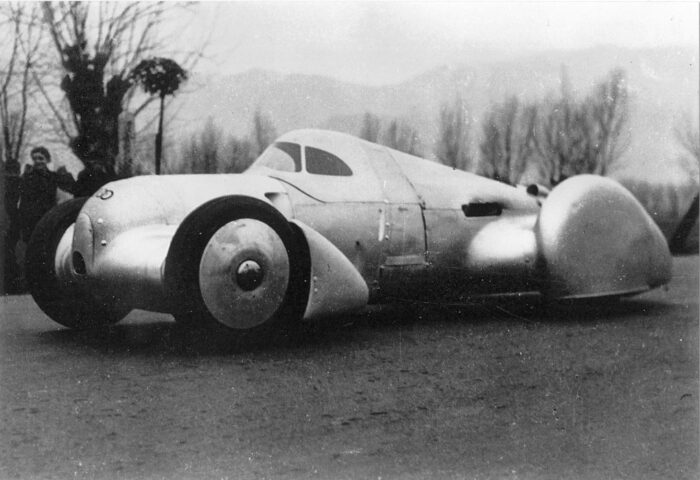
2.
At the beginning of this project a contradiction was observed: Paul Jaray’s talent for rigorous mathematical and engineering thinking, research, and invention resulted in a number of critical fundamental developments in the 20th century, the traces of which are still omnipresent today in everyday life without their authorship ever being recognized or respected. Jaray died in 1974 in St. Gallen, penniless and anonymous, without any tangible legacy or recognition of who he was in the place where he lived, and with the Swiss national media not considering his death worthy of an obituary or even a news report. This situation requires some explanation: the reality of a reputation not only lost but deliberately expunged. The reasons can be found in the history of the political circumstances to which the most productive phase of Jaray’s biography was subjected: those of the world wars, the interwar period, the Great Depression, and the National Socialist regime in Germany. The aim of the current project has also been to reconstruct and explain Jaray’s intentional marginalization, insofar as this can be ascertained from documents of the time.
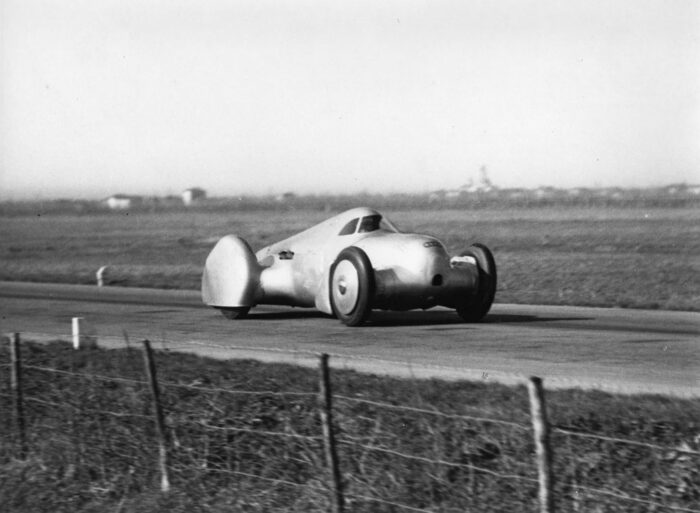
on February 15, 1935, on the Firenze-Mare highway, when it set two world records. Photographer: anon., © 2021 Archive Arsenale Institute, Venice.
3.
A striking contradiction emerges in Jaray’s biography: he never reflects on the political circumstances of his time, not even on the political premises and goals associated with his own assignments, however great their destructive influence on his circumstances as an exile and on the fate of his family. The fact that the products he designed were primarily used as a means of defense for the will to power of a state that, moreover, was always hostile to him was not something he considered. Most of the airships that he designed were war machines. He never felt compelled to write about the nationalism underlying institutionalized anti-Semitism, neither after the fact in his autobiographical notes, nor at the time when he himself was publicly exposed to racist abuse and direct persecution. It seems that he took these circumstances into account, as well as the resultant ongoing economic failure, with sober fatalism and accepted them time and again, like a biblical Job figure, without letting them interrupt his ceaseless pursuit and development of technical solutions.
Furthermore, Jaray’s scientific insights into the fluid mechanics of land-based vehicles were utilized by the fascist Nazi regime in Germany primarily for massive propaganda campaigns, and introduced within the internationally competitive field of the great automobile spectacles. This was particularly the case for the record-breaking racing cars, the so-called Silberpfeile (Silver Arrows), especially those of the Auto Union, as well as for the concept of the Kraft-durch-Freude-Wagens (translatable as “Strength-through-Joy-Automobile”) for ein Volk, or “one people.” With all of these vehicles, the optimized aerodynamic form designed to reduce drag can be traced back to Jaray’s inventions and patents.
Since the totalitarian dictatorship in Germany at the time found it intolerable to attribute these programmatically futuristic car bodies associated with the creation of nationalist myths to a Jew, Jaray’s name was removed from public awareness and largely from the history of engineering as part of the Aryanization of research. At the same time, by opportunistically deferring to the political establishment of systemic racism while exploiting its institutional enforcement, many automakers could ignore Jaray’s patent rights and appropriate his inventions, while disregarding his authorship.
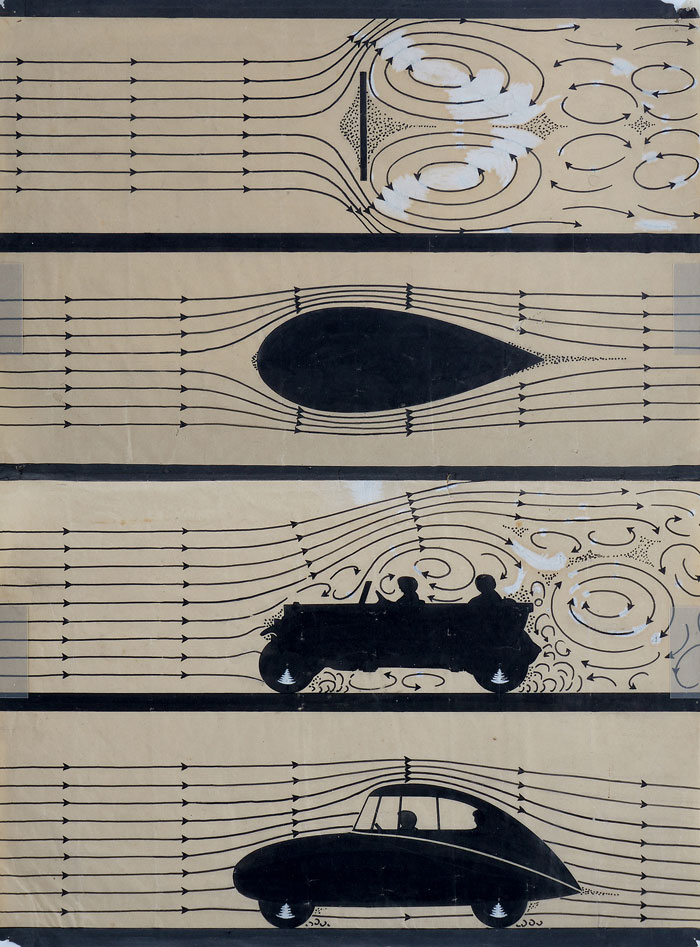
This ink drawing was created by the Swiss artist Hans Erni (1909–2015) for his friend and Lucerne neighbor Paul Jaray. He used this schematic representation of laminar
and turbulent flow in several publications. Hans Erni, ink on glassine paper, ca. 1935, private collection, © Hans Erni Estate.
4.
This was not the only reason for Jaray’s ongoing economic failure. For one thing, his rational and mathematically based forms were broadly and consistently rejected by popular taste as being ugly or grotesque. There was, and is, a simple reason for this: the socially established idea of the fast body, that of a sleek sports car, for example, is the exact opposite of the geometry of ideal mathematical form.
In the case of the optimized spindle, however, which was experimentally and mathematically verified by Georg Fuhrmann in 1912, and first utilized by Jaray for Zeppelin, the situation is the other way around. The desired laminar flow can only be achieved with a tailpiece that tapers in an aspect ratio of 1:6 of the length to the diameter. Admittedly, this image of the motor car contradicts the psychologically and subjectively ingrained preconception of a fast shape: the aerodynamically correct volume appears to be going backwards!
On the other hand, Jaray’s insistence on the ideal body with the lowest flow resistance blatantly and uncompromisingly ignored the need of automakers to differentiate themselves through recognizable brand identities. Jaray assigned them all the same mathematically-determined form. A model that he dedicated to Mercedes did not look any different from the one for Audi.
By contrast, his tapered shapes following the form of the optimized spindle came into vogue precisely where they were pointless: in static consumer goods such as vacuum cleaners, irons, adding machines, radios, baby carriages, and lamps in the Art Deco “teardrop” style, often made of the malleable precursor to plastic, Bakelite. It was only through this misappropriation that streamlined design returned to the automobile as a decorative element in keeping with contemporary taste, as a means of appealing to clientele through pseudo streamlined forms.
At the same time, the continuing failure of Jaray’s vision of an energy-efficient and rationally designed vehicle based on the current state of scientific knowledge proves that the popular automobile was never committed to such standards. It was never a utilitarian object of reason, nor even a means in the tangible sense of a tool. Rather, in accordance with manufacturers’ commercial calculations based on buyer preferences, it was nothing more than a mobile fetish for the expression of social identity and status. As a semanticized object, the auto essentially bears the character of a sign and has the status of a symbolic entity. This simple conclusion, as demonstrated throughout Paul Jaray’s biography, might be the most significant yield from this study of his anti-career, which was consistently governed by reason.
Such rationales only came into play in one field and continue to do so today: in the case of record-breaking races and motor sport competition, where the only thing that matters is the unconditional achievement of the latest maximum level of power and speed, there is no option other than to observe Jaray’s laws and rules of form. One of his most rigorous and consequently most beautiful body designs, which still seems like a utopian vision, was for the fully-enclosed Auto Union Type B record-breaking car of 1935, usually referred to as the Rennlimousine (“racing sedan”). It was used in this form only once, on February 15, 1935, for a successful record-breaking attempt on the Firenze-Mare highway near Lucca, which is why it was later nicknamed the “Lucca Car.”
With driver Hans Stuck, it became the first automobile to reach almost 300 km/h on a public road, thus setting two world records.
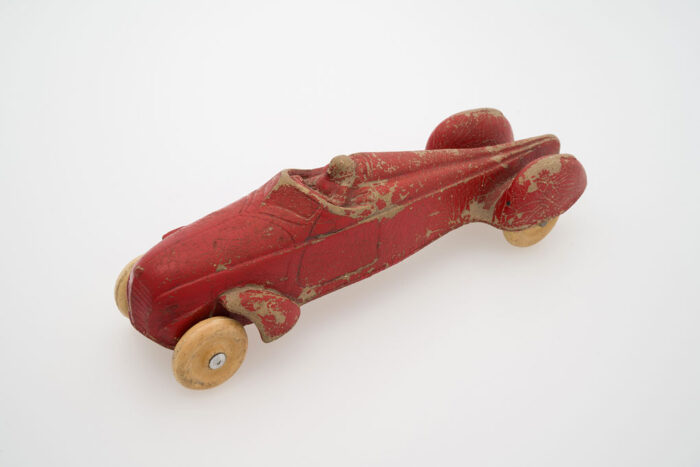
from the Arsenale Institute collection. Photographer: Jakob Schmitt, © 2021 Archive Arsenale Institute, Venice.
5.
Paul Jaray came from one of the oldest Jewish families of scholars and artists native to Prague, by the name of Jeitteles, whose notable representatives have been documented since the early 17th century. In the ensuing 18th century, they distinguished themselves as part of the Haskalah, or Jewish Enlightenment, inspired by Moses Mendelssohn. Jaray’s branch of the family reached the Hungarian part of the Austro-Hungarian empire via southern Germany, where they adopted the less ethnically conspicuous quasi-Hungarian name Járay, due to the anti-Semitic feelings prevalent even then. Members of the extended family who eventually settled in Vienna were among the city’s leading cultural elite. In addition to the sculptor Sándor Járay (1870–1943), it was Paul’s older brother Karl Jaray (1878–1947) who was active as an architect and most significantly as a benefactor and unifying figure in Vienna’s critical intellectual culture. Karl Kraus and Adolf Loos, whose work he supported as a propagandist and publisher, were among his lifelong friends. However, he also associated with Alban Berg, Ludwig Wittgenstein, Bertolt Brecht, and almost all of the key personalities of 1920s Vienna.
This connection to art and culture exerted a decisive influence on the poet, draftsman, and composer Paul Jaray from his youth onwards. His mother, a close relative of Arnold Schoenberg, guided him toward artistic self-expression, although also preventing his admission to the Academy of Art. In a manner that is hardly imaginable today, the spirit of optimism among the avant-garde at this time brought about a universalism in which the distinctive sisters, science and art, gave themselves over to a special alliance. It took on the character of a revolt against all conventional doctrines and norms opposed to the utopian will to progress, which resulted in the rejection of the academic division of labor between the natural sciences and the arts. This gave rise to figures such as Ernst Neumann-Neander, a visual artist and contemporary of Jaray, who also designed moving vehicles and who drew up the first streamlined bodies even before they had been verified in terms of fluid mechanics, the rationality of which he sought to publicize in the Werkbund as early as 1914. It was there that the true Futurist, liaising under the initials “N2,” also used the term “architecture of speed” for the first time.
At this point in history, at the sites where they were shaken by avant-garde modernism, the disciplines encountered each other in a way that was never to be repeated. This interconnection is revealed, for example, in the emergence of the scientism of the Vienna Circle, which used scientific methods to radically revitalize the humanities, initially in philosophy and logic, and correspondingly, through the ideals of Constructivism and Neue Sachlichkeit (New Objectivity) applied in the field of art. In both cases, the figure of the builder equipped with the latest engineering knowledge appeared as the prototypical version of the “New Man.” Against this background, armed with extensive literary training, the creative nineteen-year-old Paul Jaray shifted his focus of attention to participate in the realization of future locomotion machines in air and water, and on land, with no less of a purpose than to transcend existing boundaries of space and time. Yet it was Jaray’s radical and self-destructive insistence on the inner rationality and mathematical beauty of a solution against all the economic conditions and perceptions of his society that made him, in essence, an exemplary protagonist of the avant-garde.
Three years after his anonymous death, at the end of a life marked by failures, as well as by ongoing activism and technical visions for the future, a central room dedicated to utopian design at documenta 6 in 1977 (conceived by Manfred Schneckenburger) included documents from Paul Jaray’s technical oeuvre. However, this recognition was not only due to the historic background behind the spirit of his work. In a manner comparable to the radicalism of his contemporaries in art history, the artist-constructors Tatlin, Ozenfant, Picabia, Duchamp, Le Corbusier, or Neumann-Neander, he did not submit to the rules of capitalist economics wherever these collided with scientific results. Perhaps Jaray’s trait of insistent defiance is the reason why so many authors professing radical views of art have returned to the aesthetics of his creations, especially the record-breaking cars, when it comes to expressing their relationship to modernity—either affirmatively or critically. In this exhibition, these works are presented for the first time in their own logical context.
—Wolfgang Scheppe, Venice, October 15, 2021



